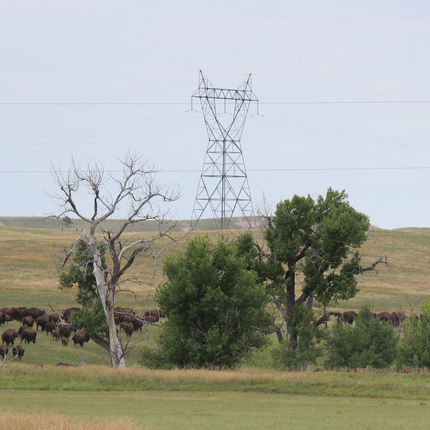While South Dakota’s solar industry is still in its infancy, the Public Utility Commission’s recent approval of the 128 megawatt (MW) Wild Springs Solar Project demonstrates the largely untapped potential of solar energy production in the state.
The Wild Springs Solar Project joins the 140 MW Lookout Park Solar Park as the first utility-scale solar projects planned in South Dakota. They are planned for Pennington and Oglala Lakota counties, respectively. An additional 80 MW project is currently planned in Fall River County. The construction of these facilities would increase South Dakota’s installed solar capacity from 1.8 MW to 348 MW in the next two years.
However, future solar development could be hampered by a lack of electrical grid capacity. Limited or outdated transmission infrastructure remains one of the largest barriers to future solar development, hindering the ability of the state to produce additional renewable electricity and the economic opportunities that development can provide to rural communities.
Public Utilities Commissioner Chris Nelson confirmed these challenges in a Public News Service article in December, saying that most of the available transmission in the state is already fully subscribed, posing a threat to utility-scale development.
Solar has become an attractive investment for utilities as installation costs have fallen 70% in the last decade. Additionally, solar projects bring new jobs and tax investments to rural communities. Looking ahead, it is clear that in order for South Dakota’s solar energy industry to continue to grow transmission capacity challenges must be addressed.
Feature photo: In South Dakota, transmission infrastructure is limited or outdated, remaining a barrier to future solar development. This transmission line runs near Hermosa. | Photo by Rhea Landholm





